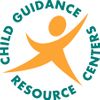By Danielle Young, Outpatient Supervisor
Have you ever heard of flight, fight, or freeze? During times of crisis, chaos, and traumatic experiences we enter “survival mode.” You might have heard this phrase before; but what does it mean? When we experience stressful events our brains being to function in a different capacity. Before we go any further, it is important to mention that these experiences can either be real life threats or perceived treats to our safety; our brain does not always differentiate between them, it just reacts.
So let’s dig into the details. Our prefrontal cortex, which we’ll call our thinking brain, manages the executive functioning skills of problem solving, organization, emotional regulation, critical thinking, and decision making skills. It’s the part of our brain that might feel more logical than emotional. Our thinking brain takes in a situation or information, uses the majority of the executive functioning skills and is able to produce a well thought out response or action. Our brain in turn is reacting to our ability to be calm, grounded, and safe.
But everything changes when we experience trauma. The thinking brain begins to dim, similar to that of a light switch, and instead our trauma brain or survival brain, begins to brighten. When that light dims, we loose the ability to use these skills effectively. Our survival brain reacts impulsivity in order to maintain self-preservation; it’s tells us that using the executive functioning skills will take too much time to process the information and that safety cannot be guaranteed. The survival brain is trying to keep us alive, but it can make everything feel much more difficult.
It can be hard to know when you’re in survival brain – especially during prolonged periods of communal trauma, like during a global pandemic, or after a tragic death and civil unrest. For adults, here are some signs that you might be in survival brain:
- Lack of focus: Things might seem foggy or hard to concentrate. You might have trouble finishing one activity in a focused manner or in the way you “usually” can.
- Changes in memory: You may have a hard time remembering situations or things that happen throughout the day. If a partner asks how your day was, you may honestly not really know.
- Fatigue: You may feel more tired, in body and mind.
- Emotionally reactive: If you find yourself being more upset about things that you wouldn’t normally react to, this can be a sign of survival brain. Perhaps you’re snippier or grumpier or cry more easily.
- Forgetting to care for basic needs: Having trouble brushing your teeth? Exercising? Washing your face? Changing your sheets? These can all be signs.
- More impulsive: You might spend excessively, eat more, or engage in activities you might not normally.
For children, survival brain can look a little different. Some signs that your child might be experiencing trauma reactions:
- Emotional reactivity: A child may show an increased emotional expression or increase emotional dysregulation; crying often, aggression, yelling, depression, etc.
- Withdrawn or isolated from others: A child may stop doing activities that bring them joy or difficulty engaging with others in conversations
- Trouble trusting other: lying, stealing, or keeping secrets
- Jumpy: A child might be more reactive and seem on edge
- Zoning out: Can look like losing focus, not hearing you when you call their name, seeming as though they are in a different world
If you see yourself in some, or all, of these, you are not alone. Right now, many people are living in survival brain more than normal. Trauma is not always defined as a personal or intimate incident that occurred; you can be feeling the impacts of trauma based on:
- Changes to routine
- Disruption of school
- Disconnection from friends and family
- Loss of loved ones
- Emotions from civil unrest
- Experiences with racism
- Bullying
- Financial unknown
These are all stressors that can dim the thinking brain and brighten survival brain.
Here’s the good news: there is hope for change. First and foremost, if you or your child are experiencing these symptoms and are interfering with your daily functioning, talk to a mental health professional. This is why we are here! The experiences of trauma do not have to impact the way we live in the world forever, but you do have to address it. Trauma is hard and at times scary to discuss, but you are not alone in your healing process.
If you are feeling some of the impacts of survival brain but it feels manageable, there are some things you can do:
- Be gentle and kind to yourself. You are not doing anything wrong, you are doing enough, you are not failing. You are having a physiological experience to stress and trauma. This is normal – and temporary.
- Move your body in a way that feels good. Trauma disrupts your body’s natural equilibrium, keeping you in a state of hyperarousal and fear. Exercise can be a great way to release energy. Endorphins shake up your physical experience if you have been feeling stuck. But make sure it’s something you enjoy!
- Reach out for supports. We are social creatures. We need our people. Call a friend, facetime, take a walk.
- Practice grounding techniques. When we are in a state of anxiety and overwhelm, it’s hard to calm down. Sometimes, no matter how hard you try to force yourself your body is still reacting like there’s danger! Take deep, slow breaths, even just for 60 seconds. Notice your surroundings. What 3 things do you see? What 2 things do you hear? What’s one thing you can smell? Connecting to what’s physically in front of you is powerful to bring your brain back to baseline. Splash water on your face or hold an ice cube – it might sound strange, but it works.
- Prioritize the self care basics: Get enough sleep, eat enough, put on new clothes in the morning, find things you enjoy and make sure to do them even if it’s a 20 minute Netflix show.
Survival brain does not have to forever, but it can feel that way. Recovering from trauma does take time and hard work, but the healing process can be so rewarding. If months have passed and your symptoms aren’t letting up, reach out for support. You don’t have to do this alone.
About the author: Danielle Young, LPC, NCC is a clinical supervisor in the Outpatient Services department at Child Guidance Resource Centers. Before being in a supervisory role, she worked as an OPS counselor, PCIT clinician, TIY parent and child group facilitator, CREATE group counselor, and School Based clinician. Danielle continues to actively practice counseling using a family systems framework with the focus on promoting healthy attachment. Outside of work, she enjoys reading, journaling, being in nature, and spending time with friends and family.

